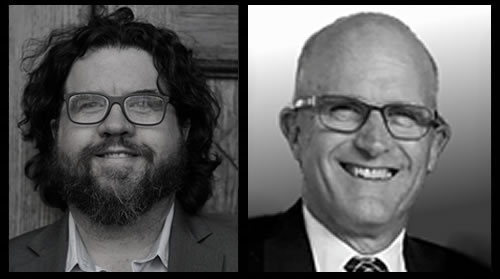For Rick Cave, Director of Technology at West Windsor-Plainsboro Regional School District in New Jersey, the biggest challenge to pivoting during the pandemic wasn’t the platforms, but the people.
In this conversation with eSchool News, Rick talks about how the changing behaviors of everyone—students, teachers, and parents—made remote and now hybrid learning work–and what aspects should remain once the crisis has passed.
The below has been edited for clarity.
eSN: What have been the most significant changes to your district as a result of the pandemic?
RC: I think the biggest factor the pandemic has really brought forward is that of independent student choice and student-centered instruction. We’ve always tried to build around that idea but, I’ll be honest, it’s not something everybody always embraces. Unfortunately, when you walk into a lot of classrooms, you still see very, very traditional instruction—teachers standing in front of the classrooms. What was interesting in this environment is teachers learned pretty quickly that lecturing to a Zoom screen is really ineffective. So there became that awareness that, now, maybe we need to do something more. Maybe we can’t just be, “I’m going to start pumping out this information and you have to kind of digest it all.”
Our elementary people were more aligned to that to begin with. So for them, the transition was pretty easy. That is not something you’re used to seeing in a high school. And so they had to kind of figure out–“How do they do it? How do we change it? How do we make it work?”
I think that was a behavior that teachers had to get used to. And what’s interesting I think, is on the student side, this is the high school students, they had to get used to that behavior as well. Our students are really good at school. They know how to play the game. They know how to be successful, according to traditional rules that are there, some of the rules changed. And so they had to do it differently and they had to kind of learn differently. Some liked it. Some did not. We have a number of kids who, when the parents were given the option to come back, the parents said no, because the kids were doing better than they’ve ever done before.
eSN: There are some people that are suspicious of that success.
RC: I know that some people think, “Well, they’re not really doing anything.” What’s interesting is what we found from our data. We have been looking at testing. We have been assessing. Our kids are really not that far behind from where they would normally be anyway. So suddenly it seems like while the normal school learning is going on, we also have kids now succeeding who never succeeded before. And that question definitely has to be asked, “Why?” What is so different for them that they’re suddenly either interested or involved in their work versus in the past?
eSN: How has the district’s relationship with parents changed?
RC: The other piece I think has been extremely, extremely powerful is the fact that parents are seeing what’s going on. There was a former superintendent who used to describe a parent’s view of education like a castle. Every day the parents bring their kids to the castle. The drawbridge comes down, the kids are allowed in and the parents kind of peek into the open to see what’s in there as the drawbridge closes. Suddenly we’ve got instruction going on in your home. Parents are in the background. Some are lurking kind of to the side because they don’t want to be seen, but we know they’re there.
But also I feel like the relationship has been strengthened because I think that parent has said, “Wow, this is really good.” Or “I find this interesting or I’m intrigued.” And, by having that connection, there are many more opportunities as a parent to actually have real conversations about what’s going on in school. So that piece, I would love to see it connected.
eSN: Do you think that with the swiftness of getting “back to normal” this fall, will many of the old behaviors revert?
RC: I mean, that’s on us, that’s on the professionals. It really is. I think you have to be concerned with that possibility. Because 18 months is not really a long time. It’s a long time to be shut down obviously, but it’s not a long time to create systemic change. Schools do not change quickly. That’s not their nature. So 18 months may not have been long enough to really get the wide ranging impact that you really are hoping to get, which means it falls back. So let’s recognize what we have, and we need to make sure this happens.
- Meet the Winners—Dr. Kellie Wilks, Chief Technology Officer, of Ector County Independent School District, TX (ECISD) - April 12, 2024
- Meet the Winners—Prince William County Public Schools (PWCS) in Manassas, Virginia wins the 2024 Community Leadership Award for Digital Equity. - April 12, 2024
- #CoSN2024 Conversation – Tom Ryan Co-Founder K-12 Strategic Technology Advisor Group (NM) - April 10, 2024

